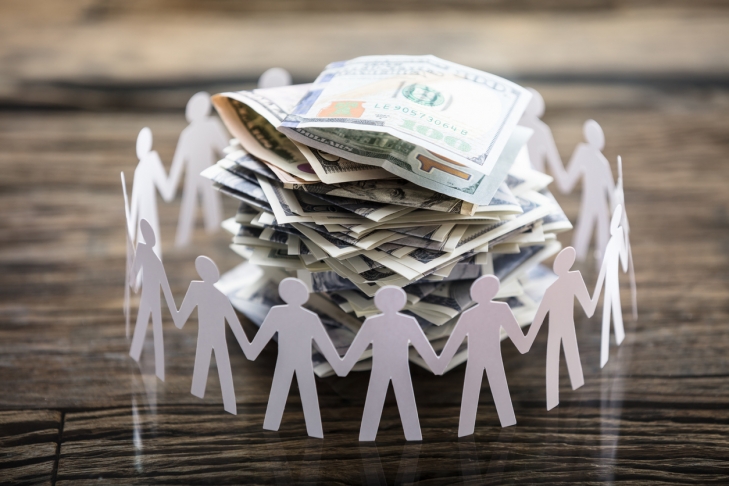
If an investment crowdfunding platform is created to help disaster-struck companies, should a typhoon-hit electric company that pollutes the environment receive help to raise funds?
Masami Komatsu is the CEO of Music Securities (MS), a Japanese financial institution that describes itself on its website as one aiming “to provide new value to the society and create new financing schemes to satisfy financing needs that traditional financial institutions could not approach”.
Although Komatsu started MS in 2000 to help promote economic independence for musicians – musicians were beholden to record companies who owned all copyrights for assuming the risks of investing in music production – he was also keen in reviving the country’s traditional “empathy-driven mutual aid…financial system”.
To that end, Komatsu in 2009 created Securite, an investment crowdfunding platform that focuses on empathy-based financial inclusion. Investment decisions in Securite were guided by three criteria: social returns, strength of business model and expected investment returns.
When a magnitude-9.0 earthquake hit northeast Japan and killed 18,000 people on March 2011, Komatsu set up a financing scheme called Securite Disaster Area Support Funds to provide desperately needed financial aid to local businesses. Unlike most other funds, this financing scheme was 50 percent donation and 50 percent investment because MS realised that these businesses were in no position to offer competitive returns. Despite this, 39,200 investors pooled together a total of 1.1 billion yen (US$9.2 million) for 38 companies that were affected by the earthquake.
In October 2019, Komatsu received a request to raise funds for Toyomi Electric after Typhoon Hagibis slammed the Kanto region. While it was a victim of a natural disaster like those in 2011 had been, Toyomi Electric had a reputation for generating negative social impact by releasing pollutants into the air and water. Should Komatsu raise funds for Toyomi?
Half-investment, half-donation, all community
Securite connected individuals to businesses in what is described as ‘investment-based crowdfunding’. MS crowdsources funds from retail investors over the Internet, followed by distributing a percentage of the revenue to investors. This makes it easier for entrepreneurs to raise money through social network contacts and friends, as well as tapping on the vast number of individual investors registered on the platform.
This model of fundraising worked well for Yagisawa Shoten, a soy sauce manufacturer that suffered considerable losses during the March 2011 earthquake, referred to in Japan as the Great East Japan Earthquake. MS created two funds (one for 100 million yen and another for 50 million yen) for a total of 150 million yen (US$1.25 million), and attracted as many as 4,248 investors.
The smallest unit of investment was 10,500 yen (US$88), of which 5,000 yen (US$41.90) was for donation, another 5,000 yen was for investment and the remaining 500 yen (US$4.19) was for fees paid to MS. The success of this ‘half-investment and half donation’ model demonstrated MS’s commitment towards empathy-based financial inclusion.
The money raised was used to rebuild the factory. All investors were eventually converted into stakeholders. The fund-raising might have indirectly helped to create a united community with a strong community spirit to rebuild the business.
While financial returns were hard to quantify because of the way the funds were structured, MS measured its success based on the number of funds it operated and the number of enterprises it provided funding for. Between the fiscal years ending March 2012 and 2016, the number of funds grew fivefold from 56 to 272.
Another indicator of success was the number of financial institutions MS partnered. The MS-created SecuriteLocal Bank ecosystem, created by MS, was a fee-based business-matching service for fund-seeking business operators throughout Japan to meet with each other. In 2010, MS entered into a partnership with Shiga Bank and subsequently forged partnerships with more than 69 other financial institutions.
Through this ecosystem, MS was able to conduct business matching for more than 150 companies per month.
To fund or not to fund?
Clearly, Toyomi Electric was in need of financing to help it tide over the after-effects of the disaster. If MS offered to raise funds for Toyomi Electric through its online platform, the latter might be able to get back on its feet and turn a profit. With the funds, the company could continue running the factory, keep its workers employed, and contribute to the recovery of the local economy.
However, the factory was known for polluting and damaging the environment in the surrounding areas. The allegations were complaints about the factory’s emissions of air pollutants leading to breathing difficulties for vulnerable populations such as the elderly and the young, and water contamination as well as damage to the local flora and fauna.
How then should MS evaluate the impact of its decision to create funds and solicit investments for Toyomi?
This is an adapted version of the SMU Case, "Music Securities: Making an Impact through Crowdfunding". To see the full case, please click on the following link: https://cmp.smu.edu.sg/case/4256
Follow us on Twitter (@sgsmuperspectiv) or like us on Facebook (https://www.facebook.com/PerspectivesAtSMU)
Last updated on 31 Mar 2020 .

